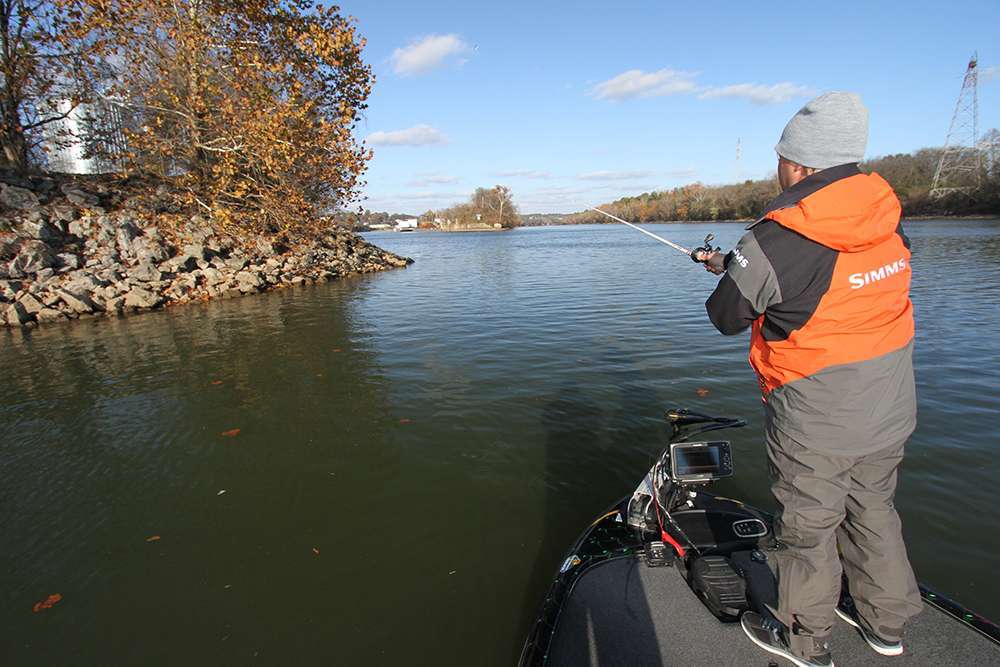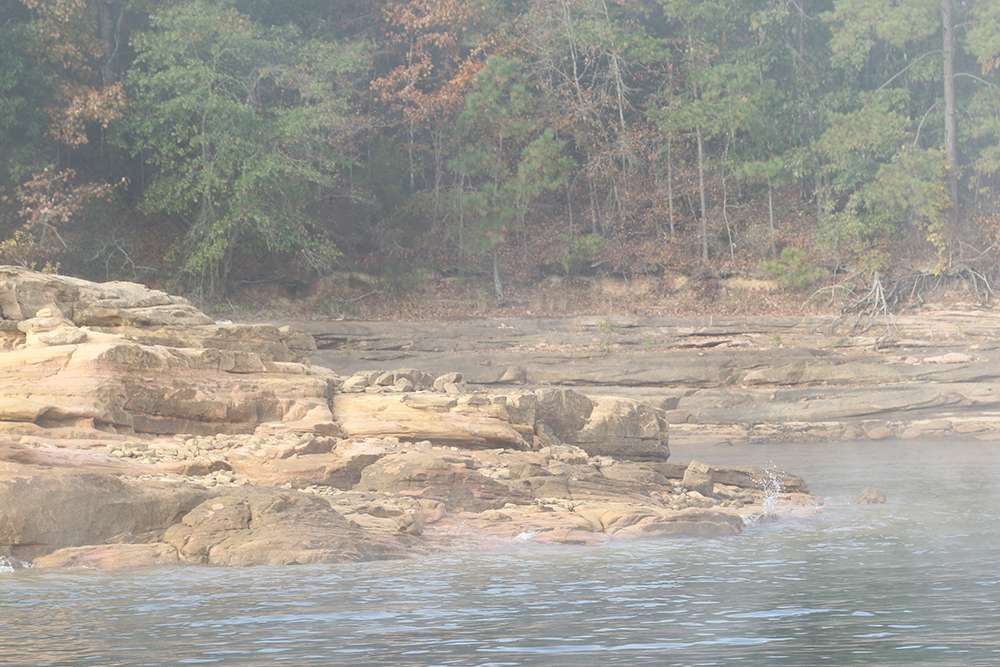
“Rain, rain go away. Come again another day.”
You won’t hear pro Tim Horton quoting that nursery rhyme — especially during winter. Why? Because the Alabama angler knows well the positive impacts liquid precipitation can have on fishing.
Truth be told, the meteorological mayhem that accompanies cold fronts can bless or curse angling efforts, so understanding how the falling and inflowing water affects the fish’s habitat will spur your success.
Horton points out that river systems bring a different set of dynamics, but we’ll get to that in a moment. For now, he shares his thoughts on how those winter rains can affect highland reservoirs in the southern and central U.S. lakes.
Know the flow
For southern and central U.S. fisheries, winter usually sees warm rains arriving ahead of a frontal system. Blustery conditions, darker skies and some level of warming — that’s the usual script.
“Nine times out of 10, when a front comes through, you get the rain on the warm end,” Horton said. “The cooling temperatures will come after that in the days to follow, but the warm rain will have already run into the lake and warmed it up.
“Sometimes, you get a warm front that’s not followed by cold weather, so a lot depends on the severity of the front. But, when you have lake temperatures down in the upper 40s and you get a warm rain that raises the water temperature in the backs of those creeks into the mid-50s, it can be some of the best fishing you’ll ever see.”

Also attractive are the heightened feeding opportunities. Yep, when warm runoff invades the creeks, it carries a load of sediment that remains suspended long enough to trap head and attract shad. This turbidity also reduces visibility and shifts the advantage to ambush-feeding bass.
Of course, too much of a good thing can swing the pendulum in the opposite direction.
“When it gets too muddy, that can be a negative,” he said. “That’s why I look to the minor run-offs, rather than the main tributaries. Some of those main tributaries coming into the creek can really get blown out, where there’s just too much sediment to really do any good.”
Another potential impediment — cold inflows. Horton’s quick to note that the effect of fluctuating water temperature is relative, so staying on top of the seasonal trends keeps you abreast of waxing and waning opportunities.
“It depends on the severity of the front, and it also depends on how early or late in the winter you are,” he said. “Fifty-five degrees can be really good if it was 50. But 55 degrees can be bad if it was 60.
“When the air temperature is not hardly getting above the 30s or 40s in the dead of winter, but then you get a warm front that comes through and that raid is 55 degrees, it’s going to warm up the water. But early in the winter or later into the spring, if the water temperature is warmer, that cold rain is going to have a negative effect.”

Right on reservoirs
Given the extreme clarity of most highland reservoirs like Alabama’s Lewis Smith Lake or Missouri’s Table Rock Lake, Horton said the stained water associated with winter rain inflows has a greater impact than it would on fish that spend most of their days in off-colored water.
“That stain actually gives you an advantage in clear water reservoirs,” he said. “You can get on the bank and catch them with a shallow-running crankbait like the Azuma Crank Z Claud Hopper, squarebill or a spinnerbait. It seems like fish that live in clear water and then suddenly get stained water become more aggressive than fish that live in a lake that’s always stained.
“It’s like they’re not used to feeding by feel (lateral line), as opposed to vision, and they’re just aggressive toward everything. So, that stained water definitely makes reservoir fish more catchable.”
Rollin’ on the river
Contrasting the reservoir’s concentrated inflow areas, Horton said he looks for a significantly different scenario on river systems like the Tennessee. For this one, think measured proximity.
“When it’s really cold in the wintertime and then you get a warm rain, the main river will quickly become warmer than the backwater areas,” he said. “It’s a catch-22 because the fish cannot get in the strength of that current, because the overall water temperature is still cold.

“Their metabolism isn’t high enough during the wintertime for them to stay out in that current, but they still want to be as close to that warmer water as they can get. So they will get right on the mouths of the main river creeks. They’ll be right on the points, but inside the coves and it’s a really strong deal where they really get stacked up.”
Essentially nosing right up to the line of actual current strength, the fish will pile onto these key spots to gorge on shad drawn to the more pleasant water — kind of like cozying up to a campfire and roasting hot dogs on a stick without sticking your hands into the blaze.
A variety of reaction baits — crankbaits, spinnerbaits, Alabama rigs — will work here, but Horton attacks this deal with a 7/16-ounce green pumpkin Swampers football jig with a subtle Klone Crawsome trailer. He’ll keep his boat inside the cove so he’s not fighting the current. Casting right to the edge of the swift water and bringing the bait into the slack water is likely to net largemouth, smallmouth or spotted bass.
“I like the jig here, but it’s not necessarily because I think the fish are not as aggressive; I can control it more as I try to make that one cast to that subtle break, that one eddy,” Horton said.
So, whether he’s poking around in the back of a secondary tributary, or targeting a main lake creek point, Horton expects those winter rains to fire up the feeding and allow him to step on the gas.
“I think you can fish more aggressively after a warm winter rain,” he said. “I think these are aggressive fish that you’re really going to catch.”





